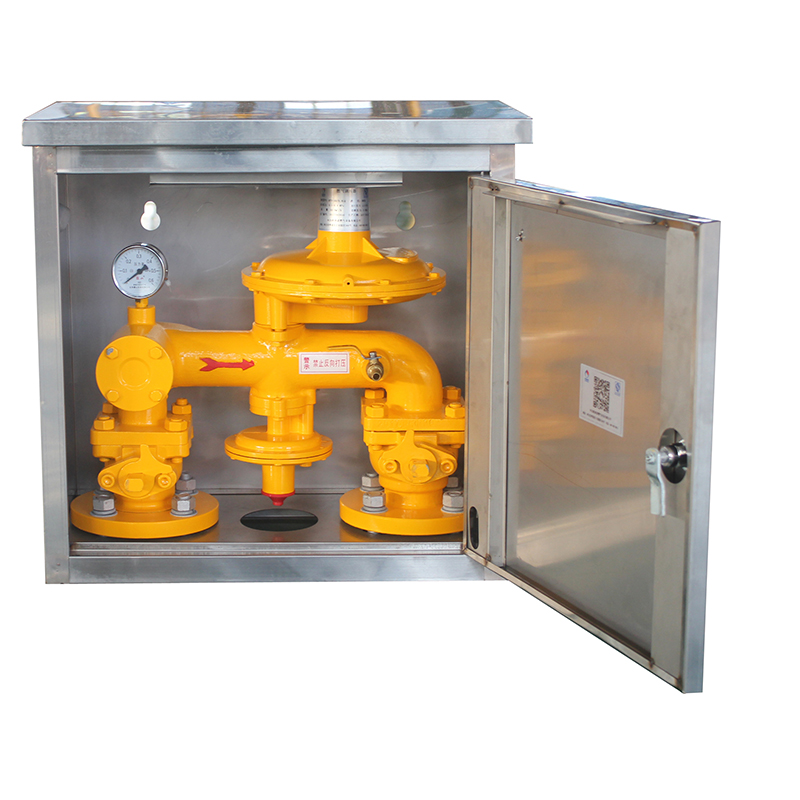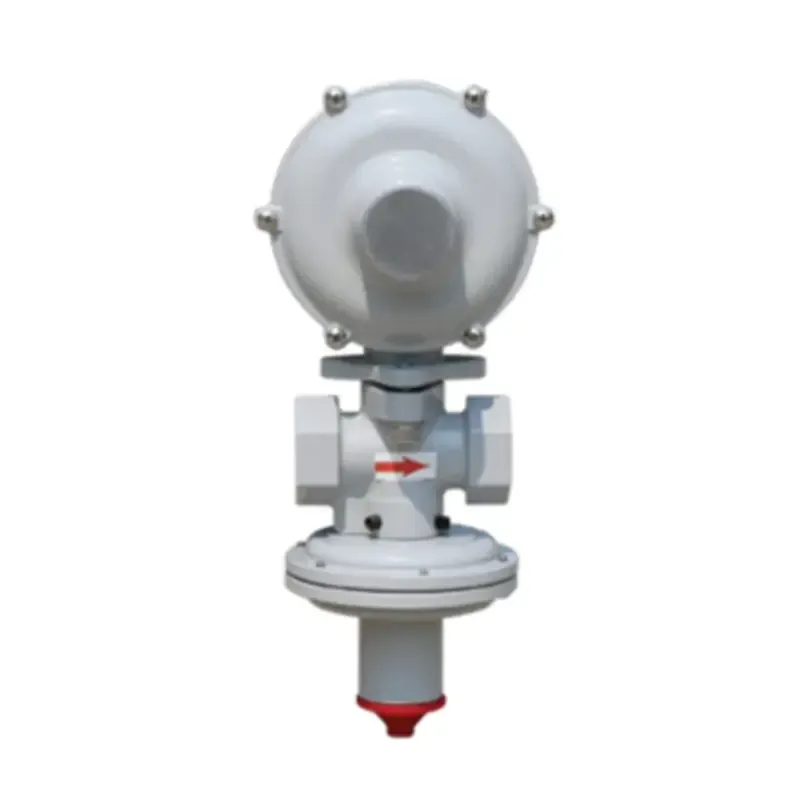
5 月 . 30, 2025 13:46
Back to list
Pressure Vessel Solutions Durable Gas & Industrial Vessel Series
- Fundamentals of pressure containment technology
- Critical design parameters and material science breakthroughs
- Performance comparison of leading manufacturing standards
- Custom engineering solutions for complex applications
- Real-world implementation success stories
- Safety protocols and compliance frameworks
- Future innovations in industrial pressure management

(pressure vessel)
Understanding Pressure Vessel Fundamentals
Containment systems designed for internal pressures exceeding 15 PSI represent critical industrial infrastructure. These engineered structures manage hazardous substances across energy, pharmaceutical, and chemical processing sectors where failure carries catastrophic consequences. The American Society of Mechanical Engineers (ASME) reports that properly maintained units demonstrate less than 0.003% annual incident rates globally, validating robust engineering principles. Modern gas pressure vessel
technology has evolved significantly from early boilers, now incorporating composite materials capable of withstanding extreme conditions up to 10,000 PSI.
Material selection constitutes the primary safeguard with ASME Section VIII mandating strict specifications. Carbon steel remains prevalent for non-corrosive applications (58% market share), while duplex stainless steels dominate aggressive chemical environments. Advanced manufacturing now incorporates automated welding processes achieving 99.2% joint efficiency ratings, coupled with volumetric examination through phased array ultrasonics identifying flaws as small as 0.5mm. These protocols ensure structural integrity throughout decades of thermal cycling and pressure fluctuations.
Engineering Superiority in Critical Containment
Leading-edge designs incorporate finite element analysis (FEA) simulations verifying stress distributions under peak operational scenarios. Modern computation allows engineers to optimize wall thickness profiles, reducing weight by 15-30% while maintaining safety margins exceeding 3.5:1. The technological progression demonstrates tangible impacts:
- Multi-layered construction (auto-frettaged layers) enabling 40% higher pressure thresholds
- Internal linings from HVOF-sprayed alloys achieving corrosion resistance 8X superior to monolithic vessels
- Integrated sensor networks monitoring wall thinning with 0.01mm precision
Global Manufacturing Standards Comparison
| Standard | Pressure Range | Temperature Limit | Material Certification | NDT Requirements |
|---|---|---|---|---|
| ASME VIII Div.1 | 15-3,000 PSI | 800°F | ASME II Approved | Spot RT/UT |
| PED 2014/68/EU | Up to 10,000 PSI | 1,000°F | EN 10204 3.1/3.2 | 100% RT + TOFD |
| ASME VIII Div.2 | Unlimited | 1,200°F | Section II + NACE | Full RT/UT + PAUT |
Third-party validations through accredited agencies reveal that vessels designed to Division 2 specifications withstand 2.2 million pressure cycles before requiring retirement - demonstrating superior fatigue resistance compared to other standards. The Vessel Series produced under such frameworks consistently delivers industry-leading mean time between failures exceeding 26 years.
Custom Engineered Solutions
Industry-specific configurations address unique operational constraints including space limitations and atypical service media. The modular design approach enables:
- High-pressure gas storage vessels with internal aspect ratios of 1:18 for aerospace applications
- Cryogenic containment systems maintaining -320°F with vacuum jacketed construction
- Hygienic designs meeting 3-A Sanitary Standards for pharmaceutical use
Recent innovations include integrated heat exchangers within pressure boundaries reducing thermal gradients across vessel walls. The concurrent engineering process minimizes prototyping requirements through validated digital twins, accelerating delivery from design to operational status by 45% compared to traditional approaches.
Industrial Implementation Case Analysis
A Canadian petrochemical facility recently deployed custom-designed vessels in a hydrogen compression system rated at 5,500 PSI. Operational data confirms performance improvements including:
- 28% reduction in maintenance downtime using advanced erosion-resistant cladding
- Consistent pressure stability (±0.75% variation during 150-day continuous run)
- Zero unscheduled shutdowns after 20 months of severe service operation
Similarly, maritime transport applications leverage Type IV composite gas pressure vessels reducing weight by 70% compared to steel equivalents while maintaining 7,500 PSI service pressure. This translates to 19% increased payload capacity for LNG carriers operating under IGF Code compliance.
Safeguarding Performance Through Innovation
Stringent quality assurance protocols mandate hydrostatic testing at 1.5X design pressure followed by pneumatic verification. Current methodologies incorporate acoustic emission monitoring during these tests, detecting microscopic material flaws undetectable by traditional NDT methods. This technology prevented seven potential failures during commissioning phases last year according to the Pressure Vessel Research Council.
For high-risk applications, supplemental protection systems include:
- Real-time stress monitoring through embedded fiber optic networks
- Rupture disk assemblies activating within 2 milliseconds of overpressure events
- Remote shutdown interfaces with 99.999% reliability (SIL-3 certified)
Future Trajectory for Pressure Vessel Development
Material science advancements promise substantial evolution for critical containment systems. Carbon fiber-reinforced vessels now enter production phase at commercial scales, demonstrating 4X strength-to-weight ratios over conventional alloys. Meanwhile, additive manufacturing enables complex geometries impossible through traditional fabrication - such as gradient wall thickness and integrated cooling channels.
The industrial landscape increasingly demands vessels with integrated intelligence. Modern designs feature:
- Predictive analytics correlating pressure fluctuations with maintenance requirements
- Automated corrosion tracking reducing inspection intervals by 40%
- Wireless load monitoring systems compliant with API 579 guidelines
These innovations ensure pressure vessel infrastructure evolves to meet emerging industrial challenges while maintaining uncompromising safety parameters. As processing demands intensify globally, manufacturers continually refine methodologies to extend service lifetimes and enhance performance thresholds across critical applications.

(pressure vessel)
FAQS on pressure vessel
Q: What is a gas pressure vessel used for?
A: A gas pressure vessel stores gases under high pressure, ensuring safe containment for industrial, medical, or energy applications. It is designed to withstand internal stress and prevent leaks or ruptures.
Q: What safety standards apply to pressure vessels?
A: Pressure vessels must comply with standards like ASME BPVC (Boiler and Pressure Vessel Code) or PED (Pressure Equipment Directive). These ensure material integrity, design safety, and proper testing to prevent failures.
Q: How do materials vary for different pressure vessel types?
A: Materials like carbon steel, stainless steel, or composites are chosen based on application. Gas pressure vessels often use corrosion-resistant alloys, while industrial vessels prioritize durability under extreme conditions.
Q: What maintenance is required for pressure vessels?
A: Regular inspections for cracks, corrosion, and pressure relief systems are critical. Non-destructive testing (NDT) and compliance with certification schedules ensure long-term safety and performance.
Q: What distinguishes a Vessel Series in pressure vessel design?
A: A Vessel Series refers to a product line with standardized dimensions, materials, or pressure ratings. It streamlines production for specific industries, such as chemical processing or LNG storage.
Latest news
-
Unlocking The Quality Gas Pressure ReducersNewsNov.01,2024
-
The Role of Gas Pressure Reducing StationsNewsNov.01,2024
-
The Importance and Functionality of Safety Relief ValvesNewsNov.01,2024
-
The Essential Role of Safety Valves in Natural Gas ApplicationsNewsNov.01,2024
-
The Essential Role of Gas Pressure RegulatorsNewsNov.01,2024
-
Enhance Your Premium Gas FiltersNewsNov.01,2024

